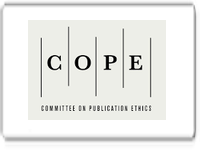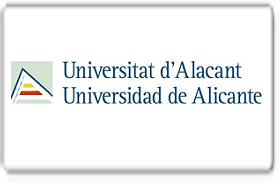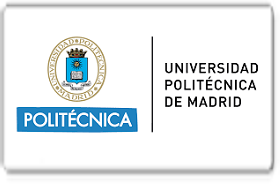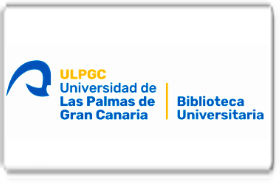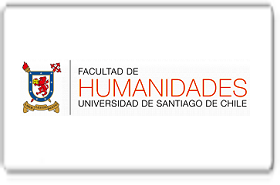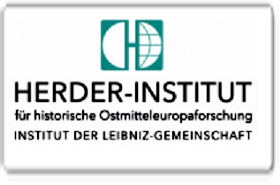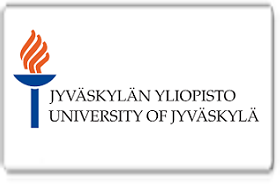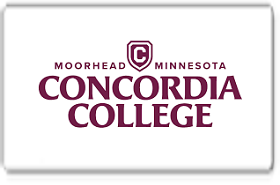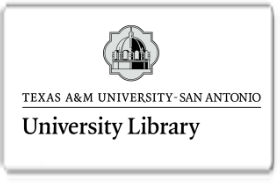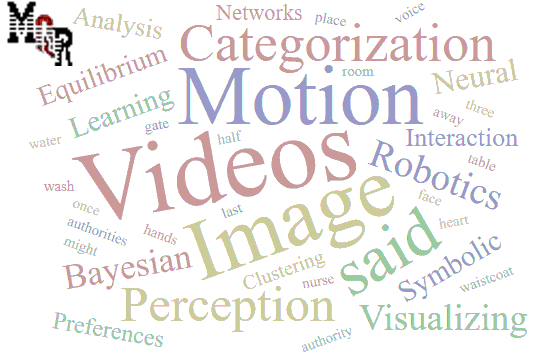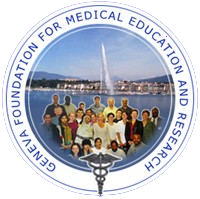Efectos adversos en la tracción ortodóncica de piezas impactadas en el segmento anterior de los maxilares: revisión narrativa
DOI:
https://doi.org/10.56048/MQR20225.7.2.2023.816-834Palabras clave:
Odontología; odontología preventiva; salud; terapia; medicina preventiva (Tesauro UNESCO)Resumen
El objetivo de este artículo bibliográfico es investigar el efecto adverso de la tracción ortodóncica. Los datos fueron recolectados sobre la base de la información electrónica como: Science, Taylor & Francis, Scopus, ProQuest, BVS, PubMed, Redalyc. Se utilizaron tres combinaciones de palabras claves “Efectos adversos”, “Tracción”, “Diente impactado”, relacionadas entre sí con los términos booleanos “AND” desde el año 2010 hasta 2022. El movimiento adverso a la tracción es una de las patologías con mayor incidencia, presentándose más en el sexo femenino y en la región palatina. Las complicaciones de las tracciones ortodónticas como las fuerzas excesivas producen reabsorción radicular, pérdida de anclaje, movimientos indeseables en los dientes que pueden llevar a una recidiva al tratamiento, otro punto a tener en cuenta durante el anclaje, es el tipo de aditamento que se usa para la tracción (microimplante) y la biomecánica de acuerdo a la posición de la pieza impactada.
Descargas
Métricas
Cited
DOI: 10.56048![]()
Citas
Aguilar, V., & Benavides, E. (2021). El uso de un cantiléver para el tratamiento ortodóncico del incisivo impactado en posición horizontal. Revista Habanera de Ciencias Médicas, 20(3), 1–8. http://www.revhabanera.sld.cu/index.php/rhab/article/view/2882
Arriola, L., Ruíz, G., Rodríguez, Y., Aliaga, A., Boessio, M., & Dias, H. (2019). Influence of impacted maxillary canine orthodontic traction complexity on root resorption of incisors: A retrospective longitudinal study. American Journal of Orthodontics and Dentofacial Orthopedics, 155(1), 28–39. https://doi.org/10.1016/j.ajodo.2018.02.011
Bayram, M., Özer, M., & Sener, I. (2007). Maxillary canine impactions related to impacted central incisors: Two case reports. Journal of Contemporary Dental Practice, 8(6), 72–81. https://doi.org/10.5005/jcdp-8-6-72
Becker, A., Abramovitz, I., & Chaushu, S. (2013). Failure of treatment of impacted canines associated with invasive cervical root resorption. Angle Orthodontist, 83(5), 870–876. https://doi.org/10.2319/090812-716.1
Borzabadi, A. (2022). A Scoping Review of the Efficacy of Diode Lasers Used for Minimally Invasive Exposure of Impacted Teeth or Teeth with Delayed Eruption. Photonics, 9(4), 1–11. https://doi.org/10.3390/photonics9040265
Bucur, S., Vaida, L., Olteanu, C., & Checchi, V. (2021). A brief review on micro-implants and their use in orthodontics and dentofacial orthopaedics. Applied Sciences (Switzerland), 11(22), 1–16. https://doi.org/10.3390/app112210719
Costa, C., Gaetti, E., Gomes de Souza, A., Gealh, W., Manrique, N., & Rangel, I. (2012). Surgical-Orthodontic Traction for Impacted Maxillary Canines: A Critical Review and Suggested Protocol. Stomatos, 18(34), 78–83.
Da Silva, A., Capistrano, A., Rodrigues, R. R., Cardoso, M., De Castro, A., & Capelozza, L. (2017). Root length and alveolar bone level of impacted canines and adjacent teeth after orthodontic traction: A long-term evaluation. Journal of Applied Oral Science, 25(1), 75–81. https://doi.org/10.1590/1678-77572016-0133
Ferreira, V., Strujak, G., & Carlini, J. (2017). Tooth alveolus repositioning of impacted canine – case report. Rsbo, 1(2), 1–5. https://doi.org/10.21726/rsbo.v1i2.413
Fonseca, D., Gontijo, R., Mata-Cid, L., Diniz, A., Araújo, V., Thabane, L., Villamarim, R., & Oliveira, D. (2019). Effects of piezocision in orthodontic tooth movement: A systematic review of comparative studies. Journal of Clinical and Experimental Dentistry, 11(11), e1078–e1092. https://doi.org/10.4317/JCED.56328
Grenga, C., Guarnieri, R., Grenga, V., Bovi, M., Bertoldo, S., Galluccio, G., Di Giorgio, R., & Barbato, E. (2021). Periodontal evaluation of palatally impacted maxillary canines treated by closed approach with ultrasonic surgery and orthodontic treatment: a retrospective pilot study. Scientific Reports, 11(1), 1–9. https://doi.org/10.1038/s41598-021-82510-y
Inchingolo, A., Carpentiere, V., Piras, F., Netti, A., Ferrara, I., Campanelli, M., Latini, G., Viapiano, F., Costa, S., Malcangi, G., Patano, A., Ceci, S., Mancini, A., Lucia, C., Scarano, A., Lorusso, F., Palermo, A., Ciocia, A., Inchingolo, F., … Dipalma, G. (2022). Orthodontic Surgical Treatment of Impacted Mandibular Canines: Systematic Review and Case Report. Applied Sciences (Switzerland), 12(16), 1–16. https://doi.org/10.3390/app12168008
Kachoei, M., Ghanizadeh, M., Esmailzadeh, M., & Nastarin, P. (2019). A Novel Spring for Impacted Canine Traction: A New Method presentation. Advances in Bioscience and Clinical Medicine, 7(2), 1–25. https://doi.org/10.7575/aiac.abcmed.v.7n.2p.25
Khoshkhouejad, G., Ulhaq, A., & Bister, D. (2015). The “slingshot” technique to align palatally impacted canines with elastomeric chain. Journal of Orthodontics, 42(2), 153–158. https://doi.org/10.1179/1465313314Y.0000000125
Khursheed, M., Kumar, K., Ali, A., Munisekhar, S., Chandan, K., Kumar, P., Hosni, H., Jamil, H., & Ahmed, R. (2022). Ectopic Eye Tooth Management: Photobiomodulation/Low-Level Laser Emission Role in Root Resorption after Fixed Orthodontic Treatment. Healthcare (Switzerland), 10(4), 1–12. https://doi.org/10.3390/healthcare10040610
Kiliç, N., & Oktay, H. (2017). Case Report Orthodontic Intervention to Impacted and Transposed Lower Canines. Hindawi, 2017(3 mm), 1–7. https://doi.org/https://doi.org/10.1155/2017/4105713
Lempesi, E., Pandis, N., Fleming, P., & Mavragani, M. (2014). A comparison of apical root resorption after orthodontic treatment with surgical exposure and traction of maxillary impacted canines versus that without impactions. European Journal of Orthodontics, 36(6), 690–697. https://doi.org/10.1093/ejo/cjt099
Louzada, L., Macluf, E., Rodrigues, C., Da Silveira, C., & Sanches, R. (2014). Lack of pulp sensitivity in maxillary canines submitted to orthodontic traction: a retrospective clinical study. Rsbo, 10(1), 29–33. https://doi.org/10.21726/rsbo.v10i1.891
Naoumova, J., Rahbar, E., & Hansen, K. (2018). Glass-ionomer open exposure (GOPEX) versus closed exposure of palatally impacted canines: A retrospective study of treatment outcome and orthodontists’ preferences. European Journal of Orthodontics, 40(6), 617–625. https://doi.org/10.1093/ejo/cjy031
Noorollahian, S., & Shirban, F. (2018). Chair time saving method for treatment of an impacted maxillary central incisor with 15-month follow-up. Dental Research Journal, 15(2), 150–154. https://doi.org/10.4103/1735-3327.226530
Papagiannis, A., Fanourakis, G., Mitsea, A., Karayianni, K., Vastardis, H., & Sifakakis, I. (2021). Orthodontic treatment of a patient with dentin dysplasia type I and bilateral maxillary canine impaction: Case presentation and a family-based genetic analysis. Children, 8(6), 1–13. https://doi.org/10.3390/children8060519
Pithon, M. (2022). Therapeutic approach in Class I malocclusion with impacted maxillary canines. Dental Press Journal of Orthodontics, 27(2), 1–37. https://doi.org/10.1590/2177-6709.27.2.e22bbo2
Plaza, S. (2016). Orthodontic traction of a transmigrated mandibular canine using mini-implant: a case report and review. Journal of Orthodontics, 43(4), 314–321. https://doi.org/10.1080/14653125.2016.1224539
Quirynen, M., Op, D., Adriansens, A., Opdebeeck, H., & Steenberghe, D. (2000). Periodontal Health of Orthodontically. Periodontal Status of Extruded Impacted Teeth, 71(11), 1708–1714. https://doi.org/https://doi.org/10.1902/jop.2000.71.11.1708
Rodríguez, Y., Arriola, L., Ruíz, G., Aliaga, A., Boessio, M., & Dias, H. (2020). Root changes in buccal versus palatal maxillary impacted canines of adults: A longitudinal and retrospective 3-dimensional study before and after orthodontic traction. International Orthodontics, 18(3), 490–502. https://doi.org/10.1016/j.ortho.2020.05.007
Schubert, M., Proff, P., & Kirschneck, C. (2016). Successful treatment of multiple bilateral impactions - a case report. Head and Face Medicine, 12(1), 1–11. https://doi.org/10.1186/s13005-016-0122-0
Torres, D., Hita, P., Azcárate, F., Garrido, R., De-León, G., Velázquez, R., & Gutiérrez, J. (2015). What Are the Histologic Effects of Surgical and Orthodontic Treatment on the Gingiva of Palatal Impacted Canines? Journal of Oral and Maxillofacial Surgery, 73(12), 2273–2281. https://doi.org/10.1016/j.joms.2015.07.002
Xu, L., Gu, H., Zou, G., Yuan, H., & Zhou, J. (2021). Autotransplantation of a completely developed impacted maxillary canine: A 7-year follow-up case report. Journal of the American Dental Association, 152(9), 763–769. https://doi.org/10.1016/j.adaj.2021.01.004
Publicado
Cómo citar
Número
Sección
Licencia
Derechos de autor 2023 MQRInvestigar

Esta obra está bajo una licencia internacional Creative Commons Atribución 4.0.
Los autores se comprometen a respetar la información académica de otros autores, y a ceder los derechos de autor a la Revista MQRInvestigar, para que el artículo pueda ser editado, publicado y distribuido. El contenido de los artículos científicos y de las publicaciones que aparecen en la revista es responsabilidad exclusiva de sus autores. La distribución de los artículos publicados se realiza bajo una licencia 


















